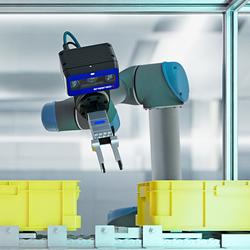Response to New York Times article - As Robotics Advances, Worries of Killer Robots Rise - by John Markoff and Claire Cain Miller
RIA Responds to New York Times article - As Robotics Advances, Worries of Killer Robots Rise - by John Markoff and Claire Cain Miller
The Robotic Industries Association (RIA) read with great interest the aforementioned article written by Mr. Markoff and Ms. Miller and takes exception to several of the points and conclusions made in the article.
RIA first published its industrial robot safety standard in 1986, in response to increasing acceptance of robotic technologies in industrial applications, and has been an active advocate in promoting industrial robot safety ever since. While even one accidental death is one too many, the robotics industry has been very successful in implementing standards and practices designed to safely deploy robots in factories and businesses throughout the world. Because of excellent global standards, there are more than 1.5 million robots now safely operating in factories worldwide.
With regard to "cage free" robots, RIA is currently leading international standards development efforts on the safe deployment on collaborative robot operations. The standards identify strict conditions and criteria that must be met in order for such robots to work without external safeguards, such as fences or light curtains. If the criteria cannot be met, the fallback position is to install the appropriate safeguarding as a means to reduce risk.
The development of the new collaborative robots and standards does not impact the safeguarding requirements of the thousands of industrial robots that are currently deployed in factories. Rather than being "dumb robots," as the article suggests, these machines use sophisticated circuitry and motors to ensure extreme precision and quality, thereby reducing the need for maintenance, troubleshooting, or other human interventions that were the cause of many of the incidents reported in the article. Furthermore, advances in safety sensors serve to expand the applications and abilities of robots while also helping to mitigate dangerous situations before accidents occur. Additionally, robots and industrial automation help increase workplace safety by doing important tasks in environments that are dangerous for people.
Every piece of equipment or technology has the risk of causing harm under certain circumstances. The robotics industry has a great history of working proactively to address robot risks and will continue to do so in the future.
Featured Product

3D Vision: Ensenso B now also available as a mono version!
This compact 3D camera series combines a very short working distance, a large field of view and a high depth of field - perfect for bin picking applications. With its ability to capture multiple objects over a large area, it can help robots empty containers more efficiently. Now available from IDS Imaging Development Systems. In the color version of the Ensenso B, the stereo system is equipped with two RGB image sensors. This saves additional sensors and reduces installation space and hardware costs. Now, you can also choose your model to be equipped with two 5 MP mono sensors, achieving impressively high spatial precision. With enhanced sharpness and accuracy, you can tackle applications where absolute precision is essential. The great strength of the Ensenso B lies in the very precise detection of objects at close range. It offers a wide field of view and an impressively high depth of field. This means that the area in which an object is in focus is unusually large. At a distance of 30 centimetres between the camera and the object, the Z-accuracy is approx. 0.1 millimetres. The maximum working distance is 2 meters. This 3D camera series complies with protection class IP65/67 and is ideal for use in industrial environments.
